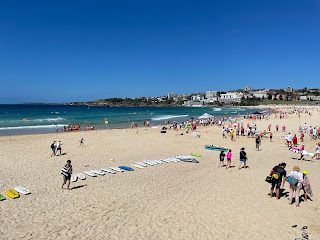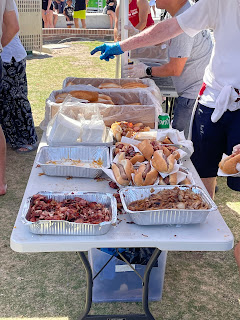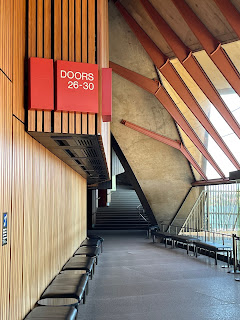Advent, 2023
Dear Friends and Family,
The year has had its “ups” and “downs” for us. It began “down,” in January, when Mark’s mother, Lorna, fell in her apartment at Calvin Community in Des Moines, breaking a hip. She had surgery and we moved her into Calvin’s nursing unit for rehabilitation.
All seemed well, so we turned to an “up,” going ahead with a planned trip to Bolivia and Columbia in late January. Bolivia was challenging, but Columbia was surprisingly pleasant!
A huge “down” was that, as we kept in touch with her during our travels, it was becoming clear that Lorna’s recovery was not going as expected. Upon return, there were many trips between home and Des Moines, and much work to close the apartment. She had a second surgery, but the downward spiral had begun. A case of Covid was the proverbial straw on the camel. Lorna died on April 5 and we held her funeral in Des Moines on April 15. She and Mark’s dad, Marvin, are together again now, as was increasingly her wish toward the end.
Later in April, an “up” was that we were able to depart on a trip to northern Italy. The Alps were very beautiful and a welcome respite from the stress of the previous weeks.
In June, another “up” was that we were joined by both daughters and their families for five days in Estes Park, Colorado to celebrate our 50th wedding anniversary. Most of us enjoyed hiking and seeing wildlife in Rocky Mountain National Park. A “down” was that grandson Corbin was sick and that kept him out of action, with a couple trips to the ER, during our Colorado stay.
All “up”: Corbin recovered some days later, and is a normal, energetic third grader. His sister, Harper, is enjoying 5th grade, the last step before middle school next year. And brother Malcolm has begun kindergarten in Kansas. Their cousin, Clara, is also a kindergartner in Minnesota.
Another “down” was that Katherine & family’s pet of almost 14 years, their dog, Kaia, became ill while staying with us during their vacation in late July. We had her to the vet and cared for her as best we could, but she had to be put down shortly after their return.
But there were more “ups”: We were able to enjoy a trip to Australia in November, including snorkeling on the Great Barrier Reef and visiting the “outback.” Also, we were all together again to celebrate Thanksgiving with Sarah and family in their newly constructed home in Overland Park, Kansas. And we look forward to having everyone together to celebrate Christmas with us in the Twin Cities.
Despite the “downs,” we have to say that the “ups” outweigh them. We pray that the year has brought many “ups” for you, as well, and that the hope of the Christ child brings joy to all for the year ahead.
Mark & Mary Johns



















































